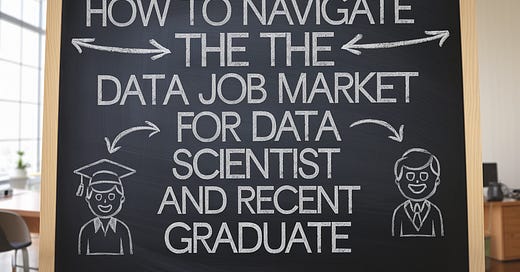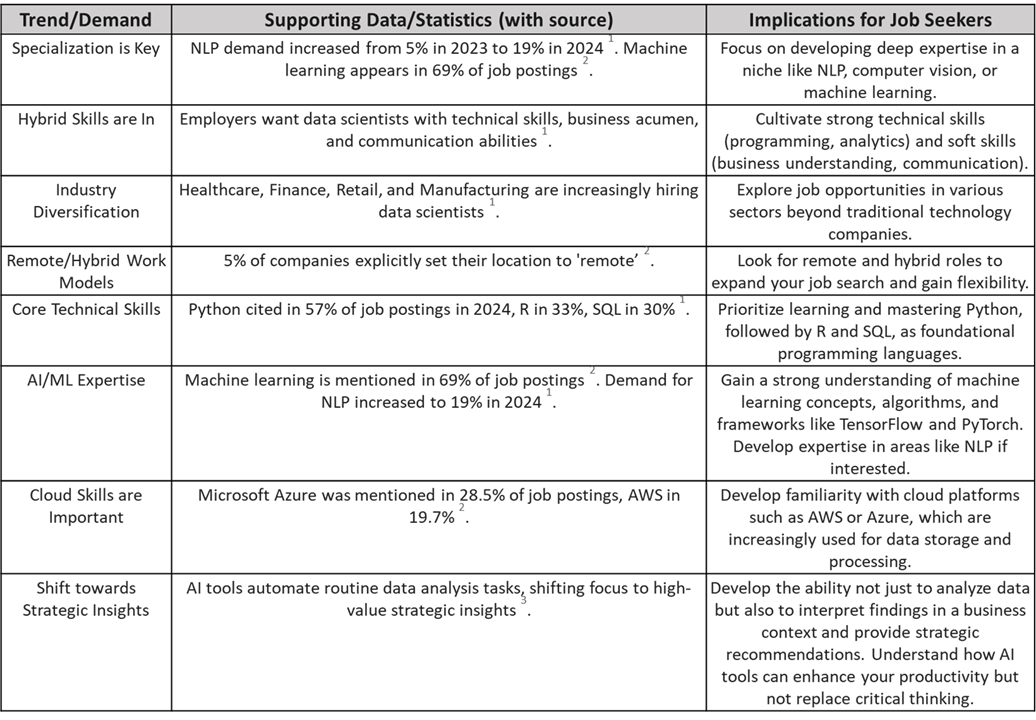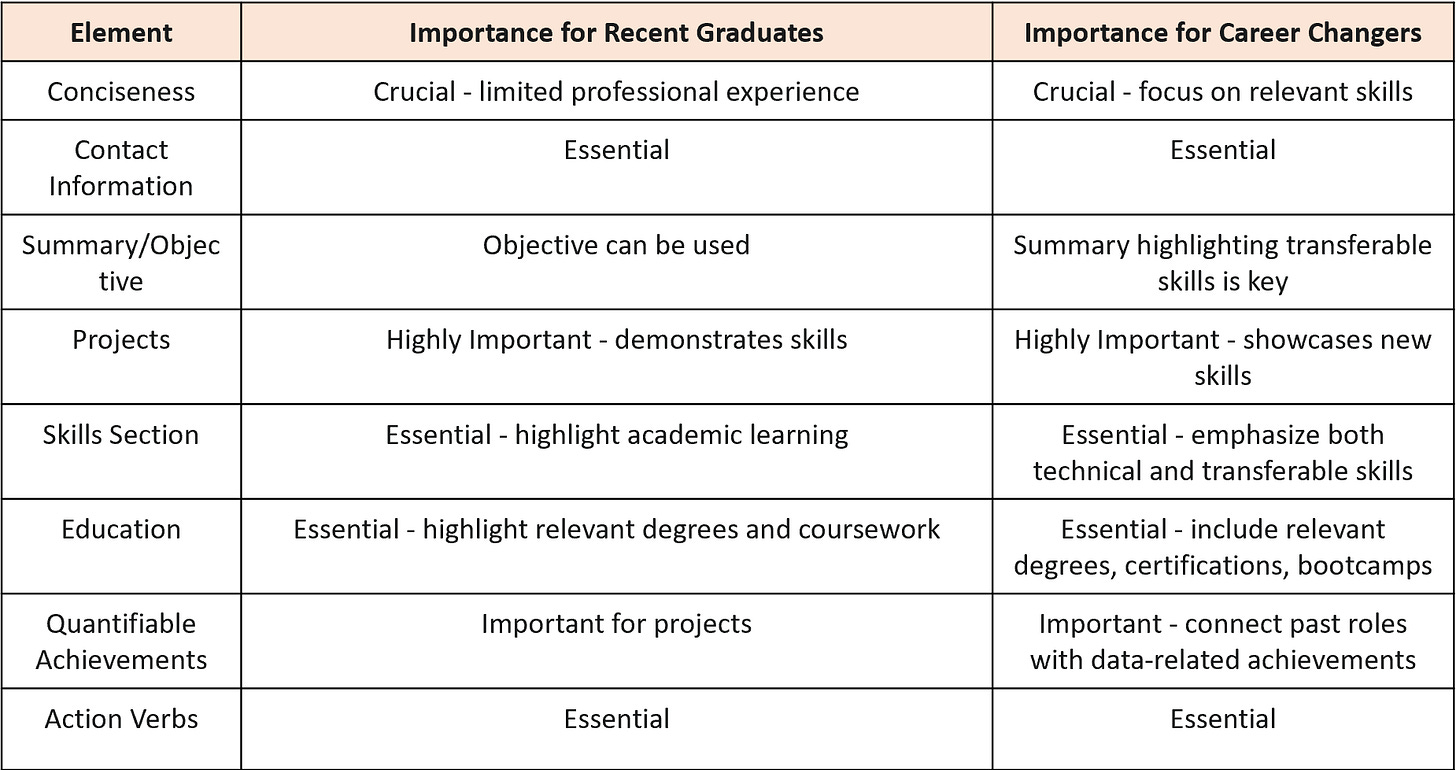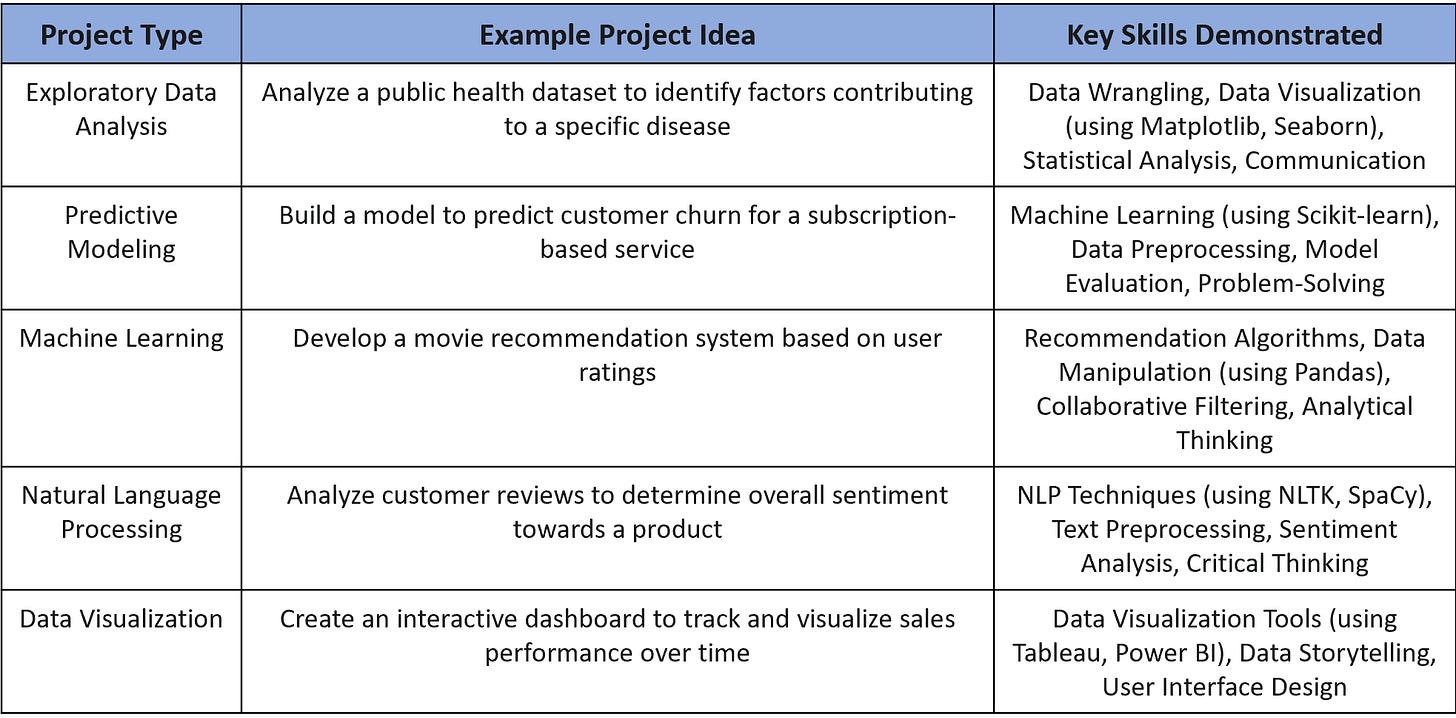How to Navigate the Data Job Market for Data Scientist and Recent Graduate
NBD Lite #53: Few insider tips and research-backed strategies to break into the field
The data science field has become a vast opportunity in our increasingly data-driven world.✨
Exciting advancements in machine learning models, particularly large language models, are drawing in individuals from various academic and professional backgrounds, making it a wonderful opportunity to enter the field of data science.
At the same time, it makes the job market much harder to navigate. It’s become much more competitive even to break into the field🤔.
That’s why this article will offer insider tips and research-backed strategies to navigate the data science job market effectively 🎯.
Whether you are a recent graduate eager to launch your career or a seasoned professional seeking a rewarding career change, we will explore it together!
Let’s get into it!
Don’t forget to subscribe to get access to these amazing pro tips! 👇👇👇
The Current Landscape of the Data Science Job Market🤵🏽
Let’s start by analyzing the current landscape of the data science job market.📊
The demand for data scientists continues on a robust growth trajectory. Projections indicate a substantial increase in employment opportunities within this field in the coming years. This sustained high demand suggests a favorable environment for individuals looking to enter the data science profession.
Despite periodic economic uncertainties and tech layoffs, the fundamental drivers of this demand—the ever-increasing volume of data and the imperative for organizations to leverage data for informed decision-making—remain firmly in place.
While the market might experience short-term fluctuations, the long-term outlook for entry-level data science roles is decidedly positive.
The data science job market offers a spectrum of entry-level roles. Data analyst positions usually become the go-to for recent graduates to gain foundational experience and specialize further. However, there are few key entry-level roles as well:
Data Analyst Intern,
Business Analyst,
Junior Data Engineer,
Entry-Level Database Administrator,
Statistician.
For entry-level data science jobs, there is a consistent theme for the technical skills that are deemed to be essential:
Programming Languages (Python and SQL)
Artificial Intelligence and Machine Learning
Natural Language Processing (NLP)
Cloud Platform (AWS, Azure, GCP)
The technical proficiency expected of entry-level data science professionals is focused on coding skills and familiarity with advanced techniques.
Other than technical proficiency, a solid foundation in analytical thinking, experience in handling and interpreting data within domain knowledge, and communication skills are also important assets.
While a bachelor's or master's degree in a relevant field is often a preferred qualification, many of the job postings do not explicitly state the degree requirements.
This shows that practical skills and a strong portfolio can compensate for a lack of formal education in data science. For one, I don’t have any data science degree so I can support this sentiment.
Various sectors, such as finance, retail, healthcare, and manufacturing, employ more data scientists than before. It’s something that job seekers should see for something outside of the tech industry.
Here is the summary of what we have discussed above123
Strategies for Recent Graduates and Career Changers to Kickstart Their Data Science Careers🚩
That’s a long header, I know. Yet, it’s important to have a strategy to break into the data science job market.
Let’s start with how the resume should be for anyone wanting to enter a data science career.
Resume Preparation
Developing an engaging narrative within your resume and cover letter is imperative for establishing a strong impression in the highly competitive data science employment landscape.
New graduates should have a concise one-page resume for recruiters to identify qualifications quickly. Start with contact information, including links to LinkedIn and GitHub. Follow with a brief summary or objective highlighting key skills, relevant experience, and career goals.
Considering the importance of practical skills in data science, a dedicated "Projects" section should be prioritised, especially if you have limited professional experience. This section should showcase personal or academic projects demonstrating your abilities and links to your code on GitHub.
A well-defined "Skills" section should list your technical proficiencies (programming languages, libraries, tools, platforms) and essential soft skills such as communication, problem-solving, and teamwork.
The “Education” section should include your relevant degrees, coursework, and any data science certifications you have obtained.
To make your resume stand out, always use numbers and metrics to quantify your achievements in projects and relevant experience. Employ strong action verbs to describe your responsibilities and accomplishments. Remember to tailor your resume to each job description, highlighting the skills and experiences most relevant to the role.
Career changers approaching the data science job market can benefit from using a combination resume format, highlighting your skills and relevant work experience.
It is essential to clearly link your past experiences to the requirements of data science roles, emphasising transferable skills such as analytical thinking, problem-solving, and any previous experience with data analysis or manipulation.
Highlight your commitment to this career transition by showcasing relevant online courses, certifications, boot camps, and personal projects you have completed. In your resume summary, offer a succinct overview of your career shift and convey your enthusiasm for data science, stressing the skills and experiences that position you as a strong candidate.
Here are the summary or resume elements you should have.
Here are some recommendations you can check out to create a great resume:
The Complete Data Science Resume Guide in 2025 by 365 Data Science
Career Change into Data Science Resume Examples: Proven To Get You Hired In 2025
Cover Letter
A strong cover letter is another essential element of your job application.
It should be personalised, directed towards the specific company and position you are applying for, referencing details from the job description and the company's website if necessary.
Start with a compelling opening paragraph that captures the reader's attention and clearly articulates the position you are pursuing, along with your interest in it.
In the letter's body, highlight the skills and experiences that closely match the requirements of the data science role, offering specific examples and quantifying your accomplishments when feasible.
Articulate your understanding of the company's mission and how your skills can contribute to its objectives. Convey your genuine enthusiasm and passion for data science and this specific opportunity.
Keep your cover letter succinct, ideally restricted to one page, and uphold a professional tone by ensuring it is devoid of grammatical errors or typos.
Conclude with a confident closing statement that reinforces your interest and expresses your enthusiasm for an interview.
Here are some references you can use to create a compelling cover letter:
Data Science Cover Letter Templates and Examples by BrainStation
Data Scientist Cover Letter Sample and Template (2025) by 365 Data Science
Data Science Portfolio
In today's competitive job market, a data science portfolio is beneficial and often essential for showcasing your skills and securing interviews.
A well-crafted portfolio is tangible evidence of your abilities, showcasing your technical expertise, problem-solving skills, and comprehension of data science principles in ways that a resume cannot convey.
A strong portfolio is essential for recent graduates and career changers with limited experience to secure interview callbacks. Recruiters use portfolios to evaluate a candidate’s skills and enthusiasm for data science. A well-structured collection of diverse projects can greatly enhance your chances of obtaining a desirable position.
Here are some project types and examples you can have in your portfolio.
Data science portfolios often feature a personal website or an organized GitHub repository displaying various projects. Each project should clearly explain the problem, your approach, the tools and techniques used, and the results obtained. It's crucial to include links to your GitHub code to showcase your coding abilities effectively.
A strong portfolio should include projects for your desired position with a clear narrative detailing your process, well-organised code, effective communication of your findings, and quantifiable results.
Use real-world datasets instead of common ones found in beginner tutorials, as this showcases initiative and versatility. An effective portfolio should demonstrate your ability to tackle real challenges with data science and communicate the impact of your contributions.
Here are some resources to improve your Data Science Portfolio:
Building a Standout Data Science Portfolio: A Comprehensive Guide by Yu Dong
How to build a great data science portfolio (with examples) by DataCamp
How to Create a Project Portfolio for Data Science Job Applications
Networking
Building a strong professional network is essential in the data science job market. Networking opens opportunities, provides insights, and offers support during your job search.
Online platforms provide data scientists opportunities to connect and engage. Here are some important platforms you can try on:
LinkedIn is essential for building a professional profile, networking with other data scientists and hiring managers, joining discussions, sharing projects, and searching for jobs.
Kaggle provides a platform for data science competitions, enhancing skills and connecting practitioners by sharing notebooks and solutions.
GitHub is essential for hosting portfolio projects, contributing to open-source data science, and learning from other data scientists while showcasing coding skills.
Platforms like Medium, Substack, and Towards Data Science allow you to share articles about your projects, learnings, and insights. This can help you establish yourself as an informed professional and reach a wider audience.
Offline networking also plays a vital role:
Attending data science conferences and industry events offers opportunities to learn about the latest trends, connect with professionals face-to-face, and potentially meet recruiters.
Participating in nearby data science meetups and workshops allows you to engage with other data scientists, share insights, and build meaningful connections.
University career fairs and industry-targeted job events can also be beneficial for encountering recruiters from companies looking for data scientists.
Creating meaningful connections goes beyond simply attaching people to your network. It involves sincere and authentic engagement.
Asking thoughtful questions and demonstrating genuine interest in others' work and experiences are essential. Providing help and support to community members can also strengthen connections. Remember to follow up with new contacts after events or online interactions to nurture the relationship.
Interview Preparation
Preparing thoroughly for data science interviews involves understanding the technical and behavioral aspects typically assessed.
Regarding the technical aspect, anticipate evaluation based on the skills outlined in the job posting. It is advisable to prepare for these, as the technical questions frequently include coding challenges.
Behavioral interview questions are equally important and often focus on assessing your soft skills. A useful strategy for answering these questions is the STAR method:
Describe the Situation,
Task you faced,
Action you took,
Result of your actions.
Emphasize your problem-solving abilities by giving examples of how you've tackled and resolved data-related issues.
A few tips that you can show during the interview as well include:
Showcase your communication abilities by clearly and concisely explaining complex technical concepts to a non-technical audience.
Share experiences that showcase your teamwork and collaboration abilities.
Share your passion for data science and desire to learn and add value to the company.
Investigate the company's mission, values, and projects to customize your answers and demonstrate interest.
Here are a few materials you can use to learn more about Data Science Interviews:
That’s all for today’s article. If you love this article, please share it with others. Don’t forget to ask questions in the comments.
Mentorship
Fast-track your data career through tailored mentorship!
Don’t hesitate to secure an appointment with me.
A free 7-day Trial with Unlimited Q&A to understand the mentorships is available for you!







